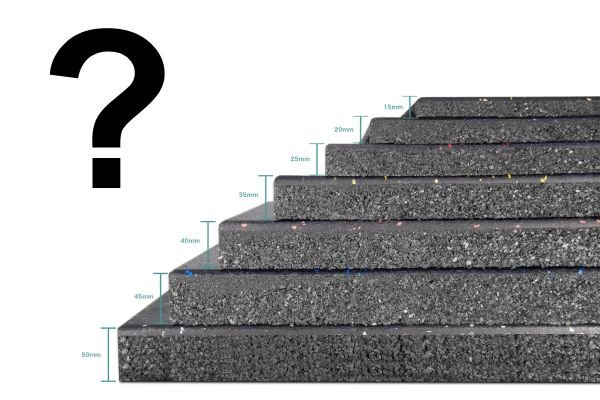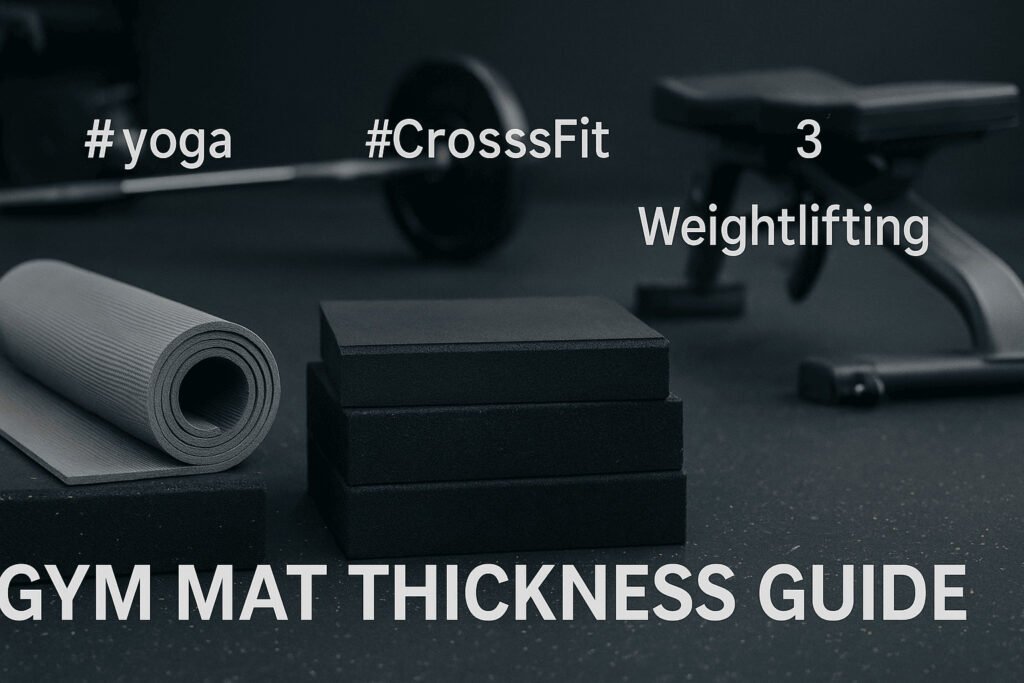What’s the Best Thickness for Gym Flooring?
Picking the wrong gym floor thickness can lead to injuries, damaged subfloors, or wasted money.
For weight zones, 20–50mm is best. For yoga and cardio, 4–8mm is enough. Functional areas need 15–25mm. Match thickness to usage for safety and durability.

Too many people ask me, “What thickness should I choose for my gym floor?” The truth is: it depends. A yoga studio doesn’t need the same flooring as a deadlift platform. If you’re a distributor, gym owner, or contractor, this guide will help you recommend or choose the right thickness. I’ve included a quick chart, product picks from Lanhefloor, and safety tips based on real-world installs.
Why Does Gym Flooring Thickness Matter?
Not all gym floors are equal—especially when it comes to thickness.
Floor thickness affects shock absorption, safety, equipment protection, and acoustic control. The wrong choice can cause damage or even injury.

Key Benefits of the Right Thickness
| Factor | Why It Matters |
|---|---|
| Shock Absorption | Protects joints and subfloor |
| Sound Reduction | Reduces noise transfer to neighbors |
| Stability | Keeps heavy equipment level and steady |
| Cost Efficiency | Don’t overpay for areas that don’t need it |
Recommended Thickness by Gym Zone
Weight zones: 20–50mm. Functional areas: 15–25mm. Yoga/Cardio: 4–8mm.
| Area | Recommended Thickness | Best Product Type |
|---|---|---|
| Weight Zone | 20–50mm | Tiny Granule Rubber Tile |
| Strength Training | 20–40mm | Composite Rubber Tile |
| Functional Zone | 15–25mm | Puzzle Rubber Tile |
| Yoga / Cardio | 4–8mm | Rubber Roll |
| Home Gym | 10–20mm | Interlock Tile or Roll |
📌 Related: Gym Rubber Tile Full Range
Rubber Tile vs Rubber Roll – Thickness Comparison
Rubber tiles support heavier weights and higher thickness ranges. Rolls are best for seamless, lightweight applications.

| Feature | Rubber Tile | Rubber Roll |
|---|---|---|
| Thickness Range | 10mm–50mm | 4mm–12mm |
| Installation | Modular / glue-down | Tape or glue-down |
| Use Case | Weights / strength zones | Cardio, yoga, walkways |
| Cost per m² | Higher | Lower for large open areas |
Lanhefloor Product Recommendations
At Lanhefloor, we offer CE and EN1177 certified gym flooring with factory-direct quality and customizable specs.
Top Picks by Zone:
- 🟧 Tiny Granule Rubber Tile: Ideal for free weight zones
- 🟩 Composite Rubber Tile: Premium finish for strength training
- 🧩 Puzzle Rubber Tile: Quick-install for PT or home gyms
- ⚫ Rubber Roll: For yoga, office or cardio zones
Frequently Asked Questions
Q: Can I use 10mm tiles in a weightlifting zone?
A: Not recommended. Use 20mm or more to protect your subfloor and equipment.
Q: What thickness is best for CrossFit or HIIT?
A: 20–30mm. You need strong impact absorption without bounce.
Q: Can I mix tile and roll in one gym?
A: Absolutely. Many clients do this to balance cost and function. Use tiles for weights, rolls for open space.
Conclusion
Choose gym flooring thickness based on activity. Heavier zones = thicker tiles. Light use = thin rolls. The right match improves performance and lowers long-term cost.
✅ Visit: www.lanhefloor.com
✅ Explore: All Gym Rubber Products | Rubber Rolls
✅ See: Real Project Cases
